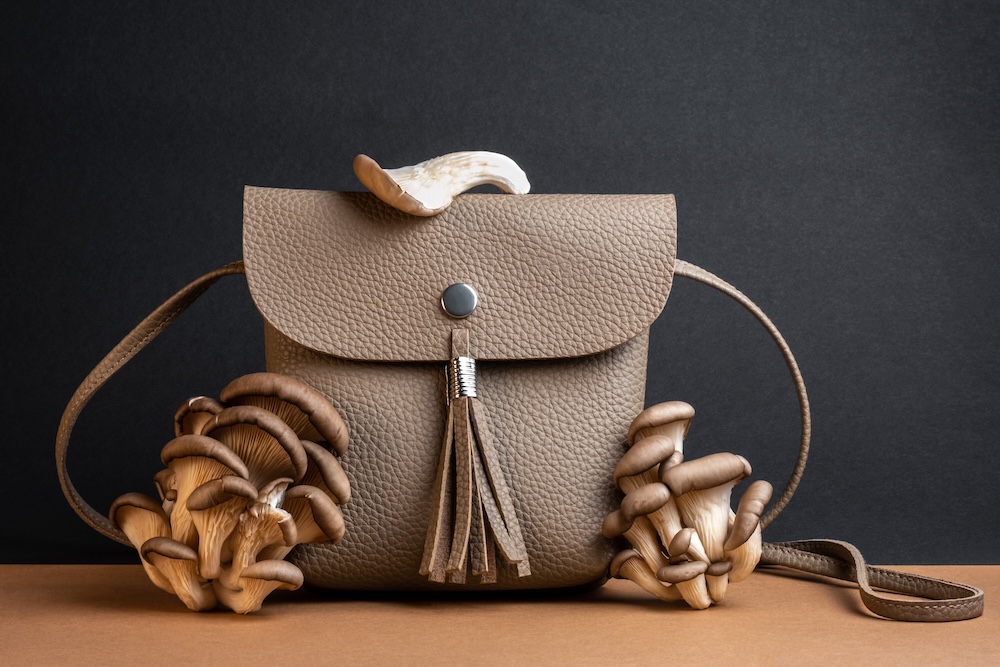Leather has long been associated with durability, luxury, and style — but its production comes with steep costs: animal cruelty, deforestation, high water usage, and chemical tanning processes that pollute waterways. Enter vegan leather — often marketed as the ethical, eco-friendly alternative. But is it really sustainable, or is the story more complicated?
The Rise of Vegan Leather
Synthetic leather alternatives date back to the 19th century, but the 1960s popularized PVC-based “pleather.” In recent decades, demand for cruelty-free fashion has driven innovation, leading to materials ranging from polyurethane (PU) to more novel sources like pineapple leaves, mushroom mycelium, cork, and even apple peels.
The result? A broad and often confusing category of “vegan leathers,” each with very different environmental impacts.
Types of Vegan Leather
- PVC Leather: Petroleum-based, cheap, and durable, but one of the most polluting plastics. Produces dioxins and microplastics at disposal.
- PU Leather: A less toxic synthetic option than PVC but still fossil fuel–derived, with recycling challenges.
- Piñatex (Pineapple Leather): Made from agricultural waste fibers, offering a lower-impact, renewable material.
- Mushroom Leather (Mycelium): Biodegradable and flexible, with strong potential for scaling sustainably.
- Cork Leather: Harvested from cork oak bark without harming the tree; renewable and naturally biodegradable.
This variety underscores a crucial point: not all vegan leather is sustainable.
Advantages of Vegan Leather
- Cruelty-Free: No animals harmed in production.
- Innovation Driver: Demand for vegan leather has fueled exciting new materials from food waste and renewable sources.
- Reduced Resource Use: Many plant-based options require less water, land, and energy than livestock-based leather.
- Design Versatility: Vegan leathers can mimic the texture and look of animal leather or create entirely new aesthetics.
The Sustainability Challenge
Despite the positives, major challenges remain:
- Plastics Problem: Most vegan leather on the market is still PU or PVC, which are fossil fuel–based and non-biodegradable.
- Durability Trade-Off: Some plant-based leathers don’t yet match animal leather’s long lifespan, leading to higher turnover and waste.
- Greenwashing Risks: Brands may market “vegan leather” as eco-friendly without disclosing whether it’s petroleum-based or plant-based.
- End-of-Life Waste: Few vegan leathers are recyclable, and most end up in landfills.
Vegan Leather vs. Animal Leather
- Animal Leather: Durable and long-lasting but tied to deforestation, methane emissions, and toxic tanning.
- Vegan Leather: Cruelty-free and potentially lower impact — but only if made from renewable, biodegradable, or recycled materials.
The most sustainable choice often comes down to context and lifespan: a responsibly made, long-lasting leather item may be less harmful than a cheaply made PU “vegan” bag that’s discarded after one season.
Circular Solutions for Leather Alternatives
A future where vegan leather truly supports the planet will require:
- Scaling bio-based leathers (mushroom, pineapple, cork).
- Closed-loop recycling systems for synthetics.
- Longevity over disposability — consumers choosing fewer, higher-quality items.
- Transparency — brands disclosing exactly what their “vegan leather” is made from.
Final Thoughts
Vegan leather is often marketed as a simple solution, but the reality is layered. Cruelty-free does not always equal sustainable. PU and PVC-based vegan leathers still carry environmental baggage, while bio-based options hold promise but remain limited.
The most sustainable path is not just what leather you choose, but how you choose:
- Fewer, better-quality pieces.
- Materials with clear sourcing and lower impact.
- Support for innovation in plant-based and biodegradable leathers.
In the end, vegan leather isn’t a perfect replacement — but it is part of a broader shift toward rethinking how we design, use, and value materials in fashion.









Reader Interactions